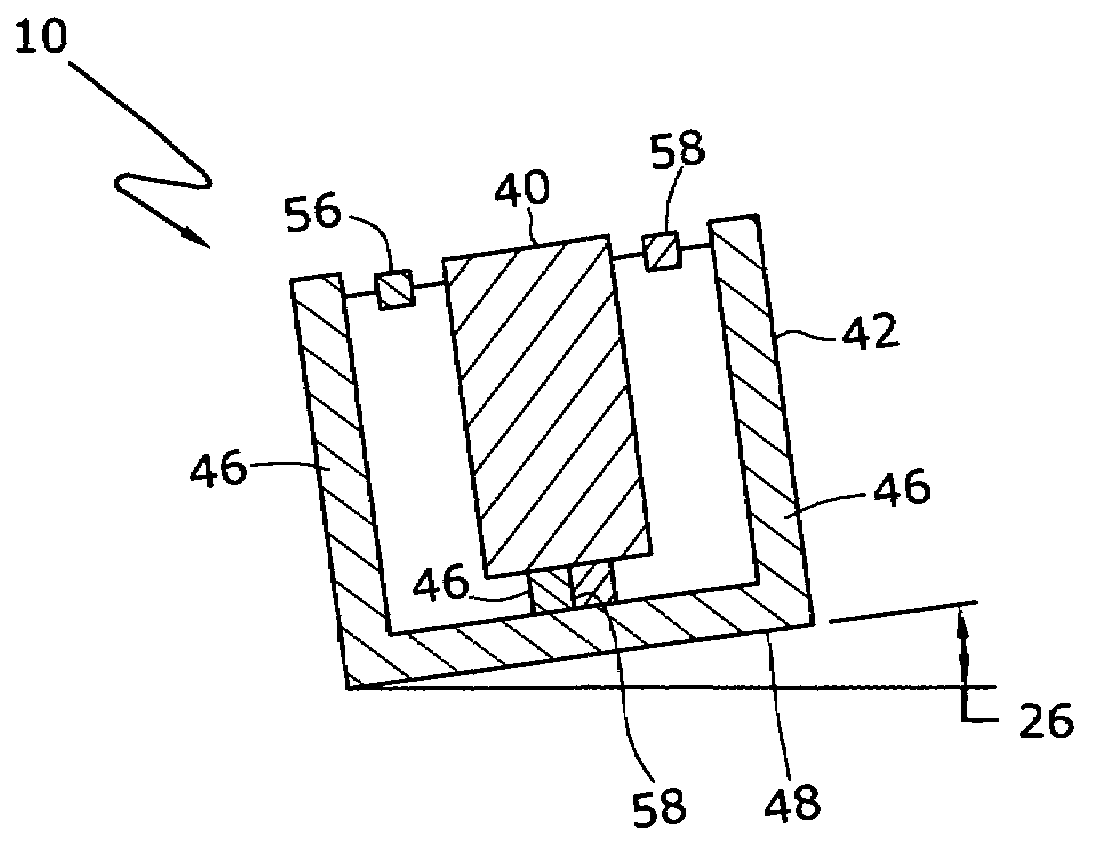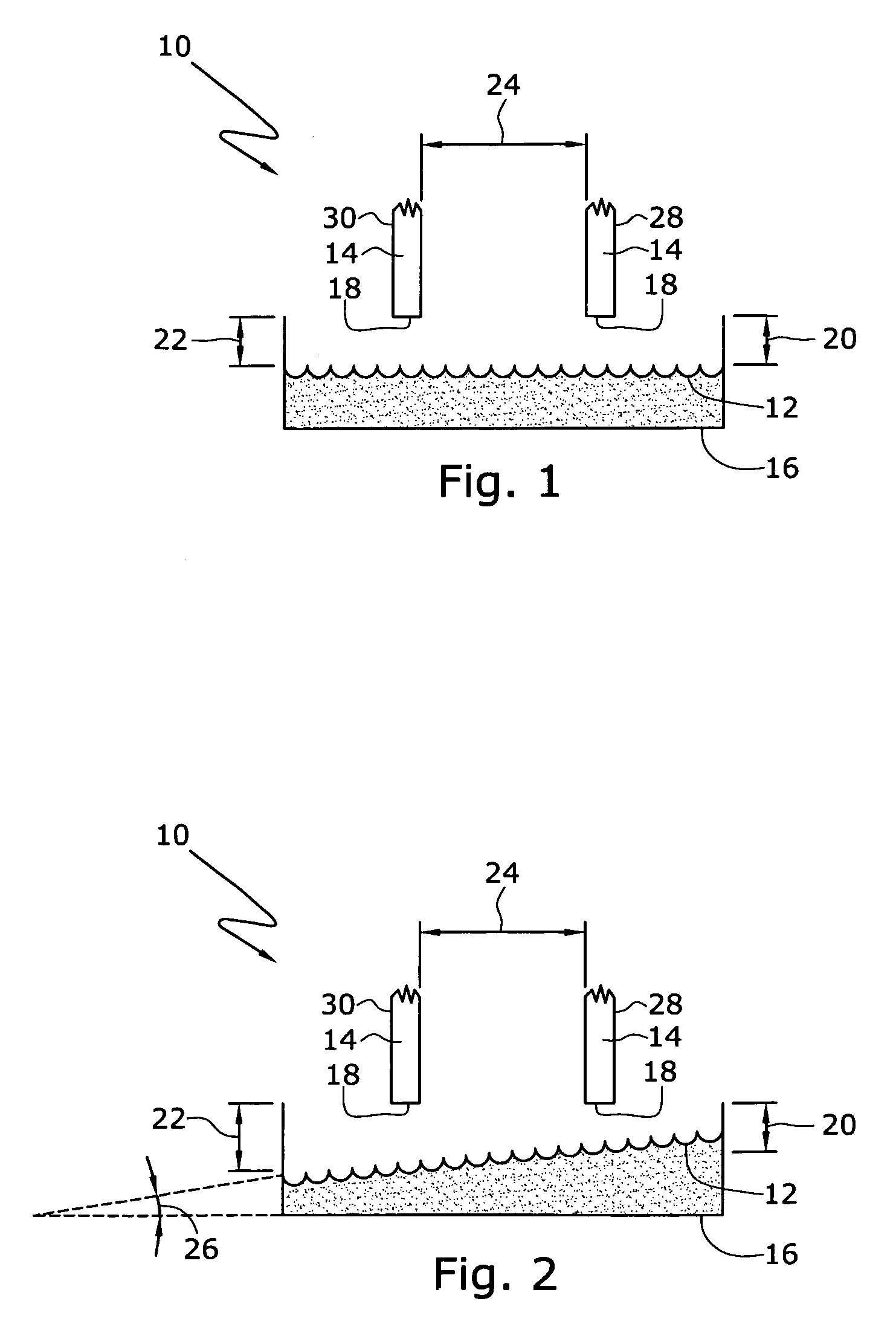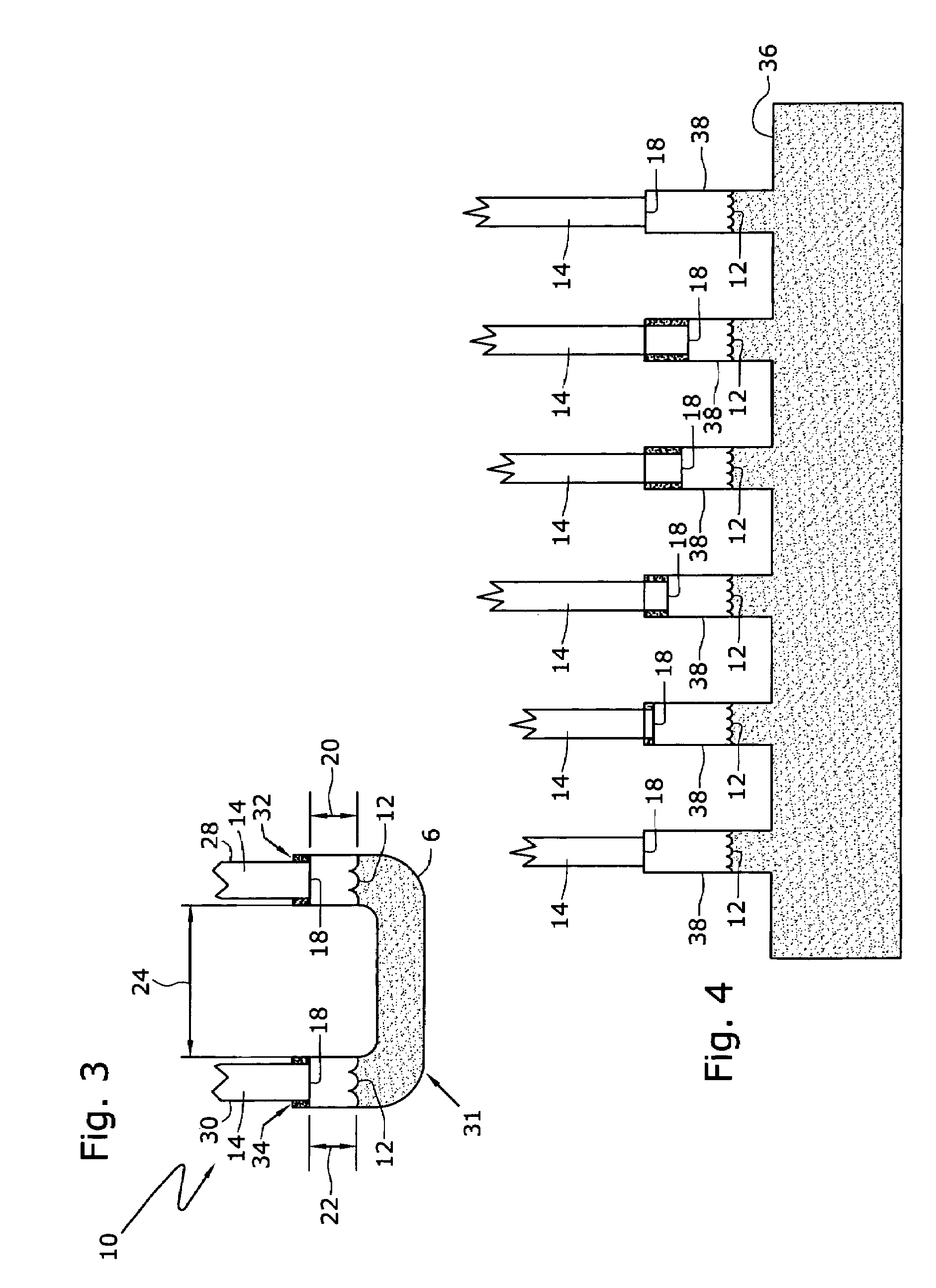Optical inclination sensor
a technology of inclination sensor and optical inclination sensor, which is applied in the direction of optical radiation measurement, instruments, and mechanical means, etc., can solve the problem of limited light from the sour
- Summary
- Abstract
- Description
- Claims
- Application Information
AI Technical Summary
Benefits of technology
Problems solved by technology
Method used
Image
Examples
Embodiment Construction
[0023]A fiber optic inclination sensor or tilt meter in accordance with one aspect of the present invention includes two or more optical fibers, each having a cleaved fiber end face that is placed in proximity to a reflective tiltable surface. As used herein, a tiltable surface is a surface that maintains a consistent horizontal level even when, for example, a container or housing in which the surface and the fibers are disposed, is tilted. Suitable tiltable surfaces include spring loaded or biased surfaces and liquid surfaces, for example the surface of mercury, water-based liquids, or oils. If mercury is used, care should be taken so that the surface tension between mercury and the walls of the container do not affect the flatness of the tiltable surface. Each optical fiber end face is spaced from the reflective surface by a predetermined gap length.
[0024]Referring initially to FIG. 1, optical tilt or inclination sensor 10 in accordance with an embodiment of the present invention ...
PUM
 Login to View More
Login to View More Abstract
Description
Claims
Application Information
 Login to View More
Login to View More - R&D
- Intellectual Property
- Life Sciences
- Materials
- Tech Scout
- Unparalleled Data Quality
- Higher Quality Content
- 60% Fewer Hallucinations
Browse by: Latest US Patents, China's latest patents, Technical Efficacy Thesaurus, Application Domain, Technology Topic, Popular Technical Reports.
© 2025 PatSnap. All rights reserved.Legal|Privacy policy|Modern Slavery Act Transparency Statement|Sitemap|About US| Contact US: help@patsnap.com



